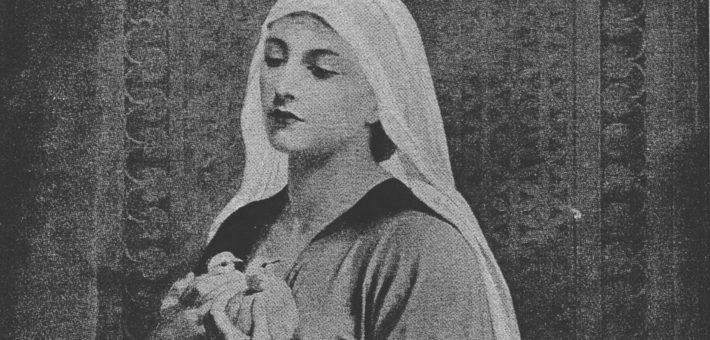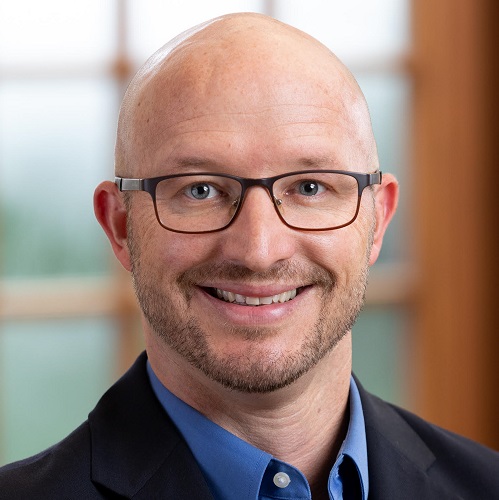Commentary on Hebrews 9:24-28
The first verses of this week’s passage from Hebrews repeat much of what has been stated earlier. The author stresses again the nature and location of Jesus’ high priestly work (see also 9:11–12). He describes the earthly sanctuary as handmade (see also 9:11) and explicitly names it a “copy” (antitypa) of the true one in heaven. He reiterates the heavenly presence of the sanctuary (see also 4:14; 8:1–2; 9:11–12). He identifies Jesus’ appearance before God, which recalls his role as intercessor (see also 7:25). Finally, he again insists on the final nature of Jesus’ sacrifice (see also 9:12).
This is the first time the author describes the earthly sanctuary as a copy. This is the only occurrence of “copy” (antitypa) in Hebrews, and there is only one other occurrence of the word elsewhere in the New Testament (1 Peter 3:21).
It is worth revisiting the author’s quotation of Exodus 25:40 in Hebrews 8:5. The key word “pattern” (typos) occurs in both Hebrews and the Greek translation of Exodus 25:40. In Hebrews 8:5, the author recalls God’s speech to Moses: “See that you make everything according to the pattern (typos) that was shown you on the mountain.” The word typos can refer to an archetype, a model, or the “original” from which a copy would be made. In the case of Hebrews 8 and 9, the point seems to be that the earthly sanctuary has been modeled off the heavenly sanctuary.
Some interpreters suggest that the author’s description of the earthly sanctuary as a “copy” of the true one in heaven betrays the author’s affinity with Platonic philosophical traditions. In Platonic teaching, the material world is a copy of the original world in heaven. The Platonic tradition makes a sharp moral distinction between the originals and the copies. The copies are always inferior, even to the point of being viewed as distractions. The goal of the philosophical life, then, is to move one’s attention away from the material world to the immaterial world where the originals reside.
There are similar sensibilities in the argument of Hebrews, when the author describes the heavenly sanctuary as “true” (8:2) and “greater and more perfect” (9:11), while denigrating the earthly as a sketch and shadow (8:5; 10:1). Interpreters of Hebrews have disagreed heartily about how deeply the author has been influenced by Platonic thinking.
Without settling the dispute, we can say that the author’s insistence that the heavenly is true, greater, and more perfect serves a theological and pastoral purpose. Perhaps the author is trying to ground the first hearers of Hebrews in a sacred space that is unaffected by human or natural disaster. The sacred space where Jesus serves as high priest is stable and eternal. Equally striking, the author insists that the audience members themselves can enter this heavenly space through the priestly work of Jesus (4:16; 10:19–22).
In verses 25–26, the author again emphasizes the “once for all” nature of Jesus’ self-sacrifice (see also 7:27; 9:12; 10:10). The author’s understanding of Jesus’ work blends precreation thinking and apocalyptic thinking. In verse 26, the author mentions the “foundation of the world.” This recalls the author’s earlier insistence that the created world was created through Jesus, the Son of God (1:2). Jesus thus existed prior to creation.
While Jesus existed before creation and shared in God’s glory and being at that time, he did not appear as high priest until the “end of the age” (9:26). This emphasis resembles the so-called “two ages” thinking in apocalyptic discourse. The idea that there are two ages—the present age, marked by evil and suffering, and the age to come, marked by the vanquishing of evil and restoration—is evident elsewhere in the New Testament (Matthew 12:32; Ephesians 1:21; 2:7).
In Matthew’s gospel, the same phrase, “end of the age” (synteleia tou aiōnos), signals the end of the present age and the advent of final judgment (Matthew 13:39–40; 13:49; 24:3; 28:20). Hebrews 9:26 locates Jesus’ resurrection and priestly work in heaven at the “end of the age.” Similarly, the first chapter says God has spoken through the Son in these “last days” (1:2).
Not unlike the perspective we find in some of Paul’s writings (Galatians 1:14; 1 Corinthians 10:11), the author seems to imagine his present time as something of an interim between the old age and the new. Something decisive has happened in the death and resurrection of Jesus: those events mark the “end of the age.” But the advent of the new age remains an event in the future. Thus, the author of Hebrews can talk about Christ appearing a “second time” to “save those who are eagerly waiting for him” (9:28). Hebrews here resembles the “already but not yet” eschatology of other New Testament writings. Jesus’ sacrifice of himself in the past has dealt decisively with human sinfulness (9:28), but the full experience of salvation is pushed off to some point in the future.
For generations, Christians have been waiting for Jesus to appear a second time. Writing about two decades after Jesus’ death and resurrection, Paul seems so convinced of Jesus’ imminent return that he instructs engaged couples not to marry (1 Corinthians 7). Writing a half-century or so later, the author of 2 Peter wrestles explicitly with the apparent delay of Christ’s return (2 Peter 3), which has given critics reason to doubt the claims of early Christians.
Engaging this text from Hebrews nearly 2,000 years later, the preacher must again balance the “already” and the “not yet” of Jesus’ saving work. The preacher can emphasize the audacious claim the author of Hebrews makes that, because of Jesus’ once-for-all sacrifice, Christians can enter the holy presence of God. Those facing struggles and crises can access Jesus’ constant intercession on behalf of his human siblings.
But the “not yet” leaves room for the biblical tradition of lament. When we hear another news report about children killed in bombings across the globe or a classroom just outside our city, we can be reminded that we are still a people waiting for God to set all things right, to finally vanquish sin and death. In this case, the end of this week’s passage can serve as a helpful precursor to the Advent season of waiting.


November 10, 2024